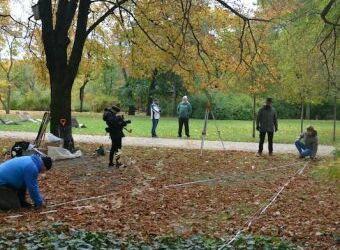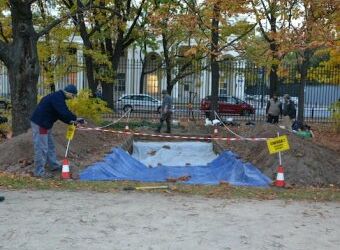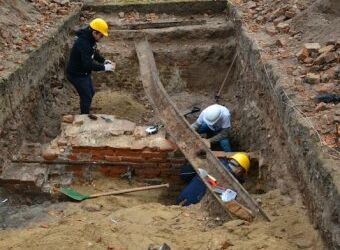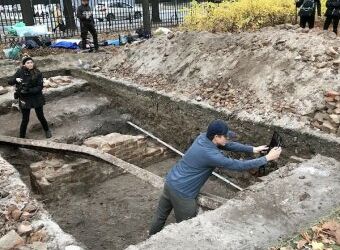How do archaeologists from the Aleksander Gieysztor Academy in Pułtusk discovered one of the Holocaust mysteries
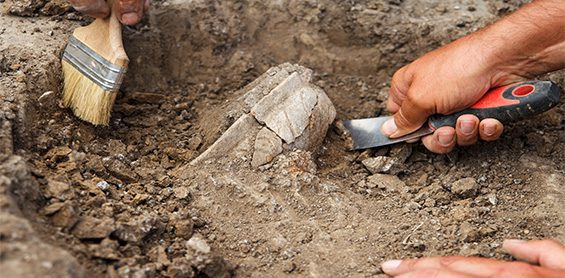
History students from the Aleksander Gieysztor Academy in Pułtusk, a branch of Vistula University in Warsaw, enjoyed a remarkable success, recently. During excavation works that were carried out under the direction of Jack Konik, PhD, in Krasiński Garden – in the former Warsaw ghetto they found, not only a silver plate devoted to Rabbi Nachum Morgenstern, but also his tombstone, at the Jewish Cemetery in Warsaw. World media were duly informed about their important discovery.
The area, at the northern border of Krasiński Garden in Warsaw, was part of the Warsaw ghetto during World War II. The archaeological work there has become a large-scale media event. The project was undertaken by the Warsaw Ghetto Museum, in co-operation with the Aleksander Gieysztor Academy in Pułtusk, a branch of Vistula University. The work was conducted by history students with archaeological specialisation, under the supervision of Jacek Konik, PhD, and Prof. Philip Reeder from Pittsburgh (USA) and Dr. Alastair McClymont from Calgary (Canada).
Among the many interesting finds, the team’s attention was drawn to a silver tablet in memory of Rabbi Nachum Morgenstern, the work having been funded by his son. “We are happy to announce that, after a fortunately short search, we found the tombstone of Rabbi Morgenstern, at the Jewish cemetery in Okopowa Street, in Warsaw. Memory defeated death” it was announced on the website of the Warsaw Ghetto Museum.
Excavation works carried out by history students of the Academy A. Gieysztor in Pułtusk, under the supervision of Jacek Konik, PhD, were the result of Polish-American non-invasive geo-physical research, carried out by the Warsaw Ghetto Museum, together with Christoph Newport University.
It is part of a wider campaign to fill the gaps in the history of the Holocaust, with the tools of geo-sciences. These include ground penetrating radar, GPS systems, magnetometers that study changes in the Earth’s geo-magnetic field, and electrofusion tomography, a technique typically used in engineering, and environmental research that visualises sub-surface structures, down to a depth of 200 metres.
It is a revolution in Holocaust research. Advanced geo-physical tools identify and map historical sites without disturbing human remains, and enable searches, honouring the view of those, who claim that digging Holocaust graves disregards the victims.
Gallery



